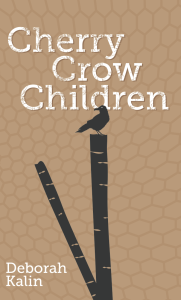To celebrate the release of Alan Baxter’s Alex Caine Series in print edition, I resurrected my Sparks series and asked Alan to tell me about where the idea for the books came from. Alan brings all the knowledge and experience of his two careers together in the books, creating something quite unique.
Alan: Kaaron asked me to write about the spark that led to the sprawling bushfire that is The Alex Caine Series. It’s actually a very simple thing but it took a long time to come around. My first novel was RealmShift, originally self-published in 2006, then acquired by Gryphonwood Press in 2010. The main character in that book and its sequel, MageSign, is a guy called Isiah. He’s a powerful immortal with an unenviable burden, and he’s also an accomplished martial artist. After all, you can get pretty good at something when you’re immortal.
Because of those books, among other things, I got a reputation for writing good fight scenes. Given that I’ve been a martial artist for over 35 years now, and my day job is as a martial arts instructor, it’s no real surprise that I was writing what I knew there, and apparently doing an okay job of it. For a long while I’ve been running workshops on the subject, helping other writers to put together more realistic and compelling fight scenes.
And then I got to thinking. I’ve written lots of characters who happen to be capable martial artists. But I’ve never written a character who was a career martial artist. A practitioner and competitor, happily living his martial arts life, who then becomes embroiled in a story. And that was the spark for the character of Alex Caine. Caine starts the story as a successful underground cage fighter, making good money in illegal MMA matches, until he runs afoul of mobsters and magic. I’d also been noodling around with this evil book idea, a subverted fantasy quest idea (set in our time, our world, with dark and horrible occurrences involved) and it all slammed together and Bound, the first book in the Alex Caine trilogy, was born.
Books 2 and 3, Obsidian and Abduction, were quick to follow. And Alex Caine’s life as a fighter at the top of his game must seem like such a distant memory to the poor bugger by now. But he’s certainly had the opportunity to put an awful lot of his martial arts training to the test.
The Alex Caine Series – Bound, Obsidian and Abduction – is available in paperback and ebook now.
Here’s Alan’s bio: Alan Baxter is a British-Australian author who writes dark fantasy, horror and sci-fi, rides a motorcycle and loves his dog. He also teaches Kung Fu. He lives among dairy paddocks on the beautiful south coast of NSW, Australia, with his wife, son, dog and cat. He’s the award-winning author of several novels and over sixty short stories and novellas. So far. Read extracts from his novels, a novella and short stories at his website – www.warriorscribe.com – or find him on Twitter @AlanBaxter and Facebook, and feel free to tell him what you think. About anything.
Here’s Alan getting excited about his books. I love that such a well-published, award-winning writer still gets excited by it all!
For those of you in Sydney or nearby, you should definitely got to the launch of these books. Alan in conversation with the amazing Garth Nix, who is both wise and funny and knows how to pour a glass of wine.

